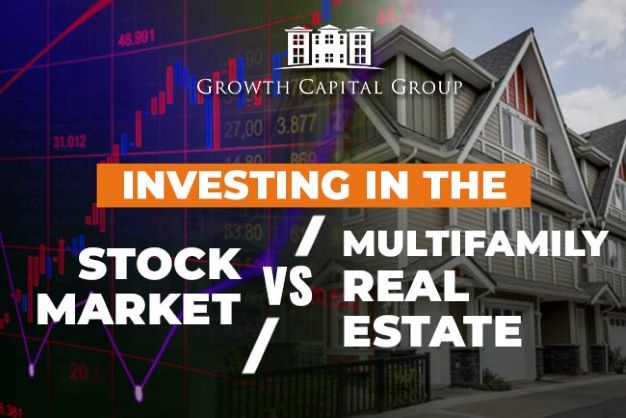Doctors require various investments to build a solid financial portfolio and preserve financial stability. Doctors are investing in multifamily properties and commercial real estate because they are less volatile than stocks, have great potential for exit growth, and offer competitive annual returns.
A multifamily property is an excellent choice for doctors looking to invest passively in real estate because these homes offer good cash flow options that can help them build wealth over time. In addition, physician investors can generate passive income by investing in multifamily properties with the correct information and direction, enabling them to make more tax-advantaged money whether or not they work the same hours at their practice.
Before Investing In Multifamily Properties, Some Points Are Essential.
- Retail, office, and industrial assets are all included in commercial real estate. However, multifamily, just a rental property with five or more units, is still the retail real estate sector performing the best overall.
- Some doctors participate by making direct real estate purchases, while others invest idly as Limited Partners (LP) in multifamily real estate syndications.
- Active real estate investing necessitates extensive expertise and attention to detail to locate deals, secure deals, carry out the business plan and manage the value daily. Real estate investors can benefit from the sponsorship group’s contacts and experience by engaging in passive real estate investing.
- Commercial real estate offers a few tax advantages over other types of investments. For example, you can use the depreciation deduction to reduce any income you receive from your investment property by using straight-line depreciation or a cost segregation study to accelerate depreciation “paper losses.”
Reasons doctors should invest in multifamily properties.
Multifamily real estate is remarkably stable and exhibits little volatility before passively investing in commercial real estate as a doctor, especially when compared to stocks. In addition, commercial real estate with multifamily units has strong growth potential and significant profits. Investing in multifamily properties can be a terrific way to diversify your investment portfolio and add stability.
Retail, office, and industrial assets are all included in commercial real estate. Multifamily, a rental property with five or more units, is still the commercial real estate sector performing the best overall. Some doctors participate by making direct real estate.
Purchases, while others invest idly as Limited Partners (LP) in multifamily real estate syndications.
Benefits of Investing In Multifamily Real Estate
Advantages of Investing In Multifamily Properties
One of the main reasons to engage in real estate is that it gives a chance to create a passive income stream separate from your practice, which can accomplish five beautiful things.
- Build wealth by paying off debt and generating income from real estate
Most healthcare workers are heavily indebted; even just a few years ago, the typical medical school debt was already close to $200,000. So even if you are generating six figures, devoting a percentage of the doctor salary to paying off that debt would drastically restrict your lifestyle and the money required to run the practice.
This financial situation can be improved by reducing debt load through real estate revenue, enabling people to get more enjoyment out of the money they work so hard to acquire.
Medical practice differs from any other business because it depends on cash flow. Cash flow from renting real estate will help to grow practice and industry, whether Doctors want to upgrade the waiting area, lease a better office space, or buy cutting-edge equipment.
- Real estate can help you pay less in taxes.
In addition to the additional financial difficulties they bear, physicians who frequently fall into the highest tax brackets may also be hit with punitive taxes (namely, medical school debt). Real estate ownership can be used to lower taxable income from your portfolio of investments. Along with adding a new source of income, this is also done.
Taxable income from passive assets can be reduced by deducting real estate business expenditures, including upkeep, maintenance, repairs, property management fees, and even travel charges for checking on their properties.
- Use real estate to create generational wealth.
They probably have a retirement plan if they’re like most professionals. However, because individuals live longer these days, their life after retirement will be considerably longer. Consequently, living a decent life after retirement frequently takes more money than initially anticipated.
Sadly, even a retirement plan with a six-figure balance might not be enough to support during retirement. Additionally, it would help if you had assets that continue to generate money for three generations to create generational wealth.
- With an additional passive income source, you can enjoy life better.
Real estate, and multifamily apartment buildings, are excellent sources of passive income. Building wealth through real estate can assist in achieving the following goals: more significant savings, a reduction in working hours, an earlier retirement, more frequent luxury trips, a more excellent car, or anything else that calls for more money.
Over the past few years, inflation has been rising, and assets that help develop wealth, like real estate, can act as a buffer against the impacts of the dollar’s depreciation.
In other words, even while income gradually loses purchasing power, real estate (which may be turned into liquidity) can act as an inflation hedge.
- Multifamily real estate frequently performs better than the stock market.
Regarding retirement or passive income, the stock market is regarded as the gold standard by most 9–5 employees. After all, equities, bonds, or mutual funds make up the majority of every single 401K or 401B. So naturally, there are alternate investments, such as funding a business.
When risk and inflation are considered, multifamily real estate has consistently beaten the stock market for decades.
Multifamily real estate begins paying off straight away. A stock portfolio may take years (or even decades) to produce significant growth; tenants must pay rent each month, whereas equities only pay out quarterly (and not all stocks provide dividends).
Conclusion
Doctors are investing in multifamily properties because it’s an excellent way to build wealth and diversify their assets. You can own half a building or two, run your practice from the business end, and make money off the rent. It’s also a solid investment option because when it boils down to real estate investing, there is nothing better than multifamily properties.
Related How Technology is Revolutionizing Multifamily Property Management
If you want to know more about Why Doctors invest in Multifamily Property, Then schedule a free call with us.







